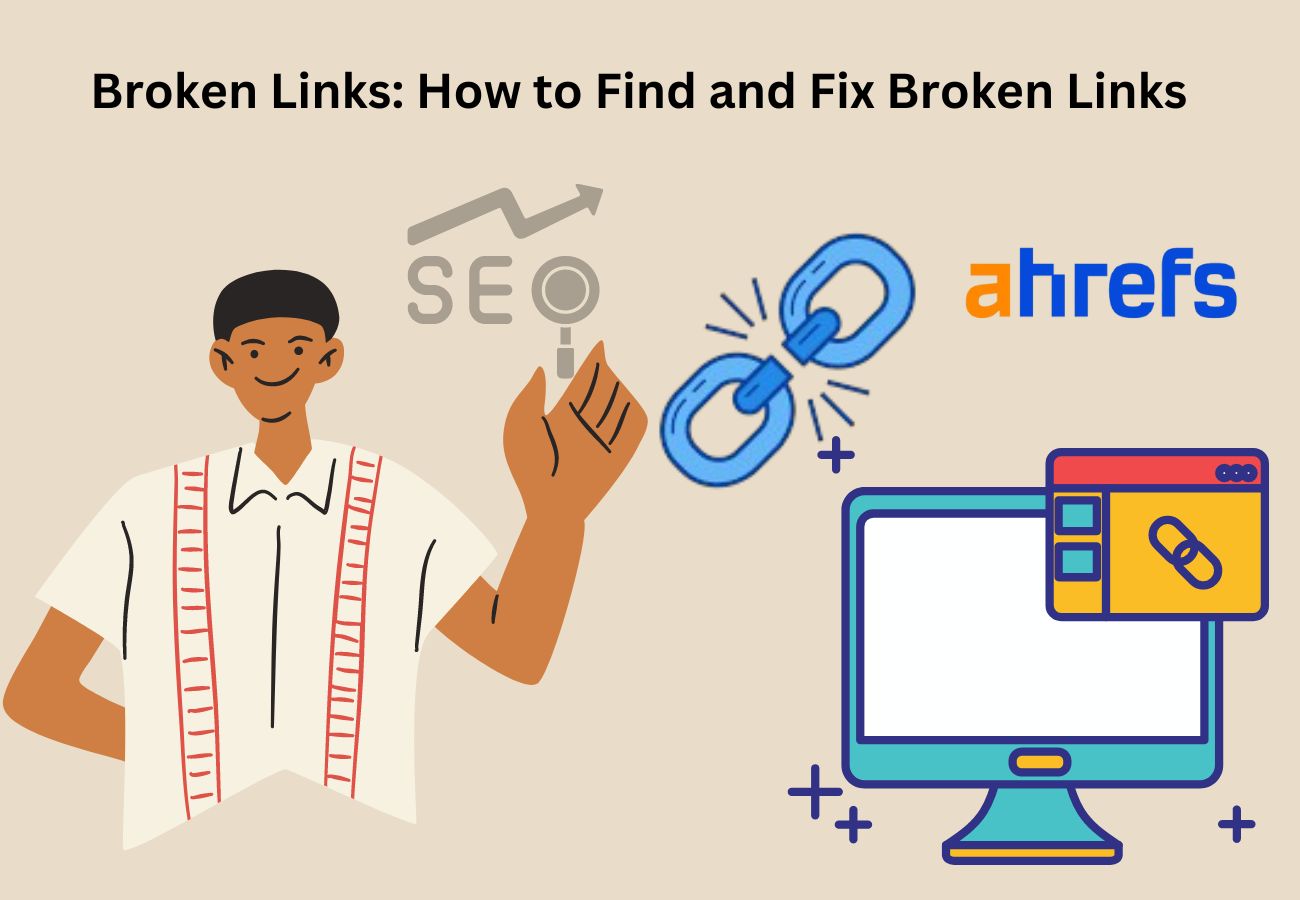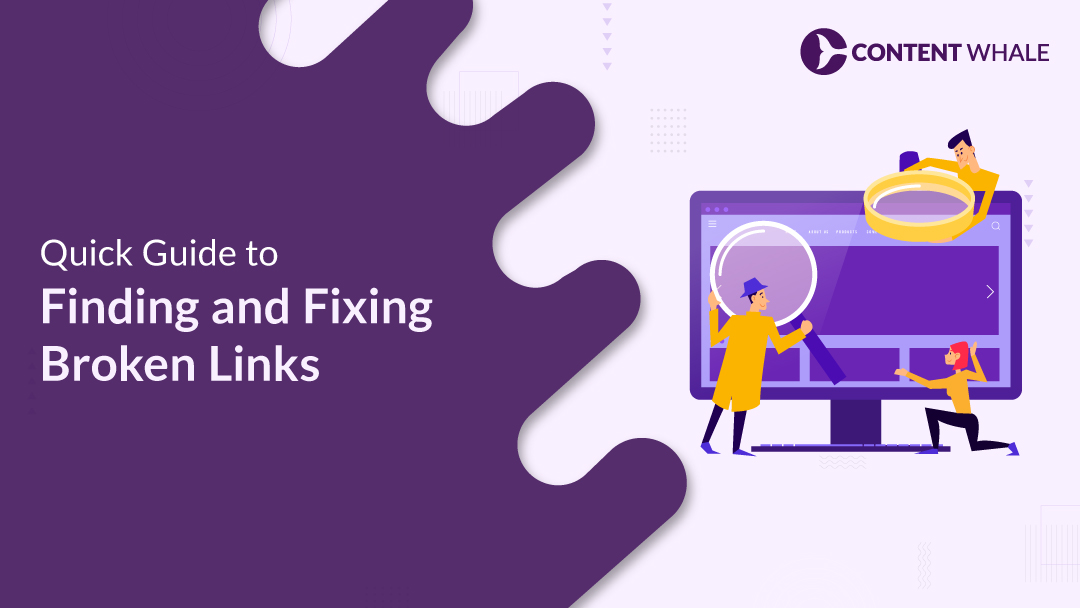How to Find And Fix Broken Links for Better Seo
Broken links can hurt your website’s SEO. They lead to poor user experience and lower rankings.
Finding and fixing broken links is crucial for maintaining a healthy website. Broken links frustrate users and can harm your site’s credibility. Search engines like Google notice these issues and may rank your site lower as a result. Regularly checking for broken links ensures your site remains user-friendly and optimized for search engines.
This process involves using tools to detect dead links and then repairing or removing them. In this guide, you’ll learn how to identify broken links and fix them effectively. Your website’s performance and user satisfaction will improve, leading to better SEO results. So, let’s dive in and keep your site in top shape!
Table of Contents
Identifying Broken Links
Identifying broken links is crucial for website health. Broken links can harm your site’s SEO and user experience. They lead to 404 errors, which can frustrate users. Fixing broken links improves your site’s performance and search engine ranking. Let’s explore how to identify broken links using different methods.
Common Tools
Several tools can help you find broken links easily. Google Search Console is a popular choice. It provides a list of 404 errors on your site. Another useful tool is Screaming Frog. This SEO spider tool crawls your site and identifies broken links. Ahrefs is another option. It offers a detailed broken link report. These tools save time and provide accurate results.
Manual Methods
Manual checking involves visiting each page on your site. This method is time-consuming but effective. Check all internal and external links. Make sure they lead to the correct destinations. Use browser extensions like Check My Links. These extensions highlight broken links on a page. Another method is to review your site’s analytics. Look for pages with high 404 error rates. This can help pinpoint broken links. Combining manual checks with tools ensures thorough results.

Credit: www.minddigital.com
Impact On Seo
Broken links can harm your website’s SEO. They affect user experience and search engine rankings. Understanding their impact is vital for effective SEO management. Let’s delve into how broken links influence your site.
Search Engine Rankings
Search engines, like Google, prioritize quality and user-friendly websites. Broken links signal poor maintenance. They lower your site’s credibility. This can cause a drop in rankings. Lower rankings mean less visibility. Fixing broken links helps maintain a strong online presence.
User Experience
User experience matters for SEO. Broken links frustrate visitors. They disrupt the flow of information. Users may leave your site quickly. High bounce rates tell search engines your site is not engaging. This can further hurt your rankings. Ensuring all links work improves user satisfaction. Happy users often spend more time on your site. This behavior boosts your SEO efforts.
Fixing Broken Links
Fixing broken links is crucial for better SEO. Identify and repair these links to improve website usability and search engine ranking. Regularly check for broken links using online tools and promptly update or remove them.
Fixing broken links is crucial for improving your website’s SEO. Broken links can frustrate users and hurt your site’s credibility. By addressing these issues, you can enhance user experience and boost your search engine rankings.Redirect Strategies
One effective way to fix broken links is by setting up redirects. Redirects can guide visitors from a broken link to a working page on your site. The most common type is the 301 redirect. This tells search engines that the page has permanently moved. It’s like changing your address with the post office. This way, you keep the SEO value of the old link. Another option is a 302 redirect, which is temporary. Use this when you plan to bring the original page back. Tools like Yoast SEO or Redirection plugins can help set these up easily. Make sure you test the redirects to ensure they work properly.Updating Links
Sometimes, the best way to fix broken links is by updating them. This is especially useful if you have moved content to a new URL. Start by identifying broken links using tools like Google Search Console or Screaming Frog. These tools will show you which links are broken. Next, find the correct URL for the content. If the content no longer exists, consider linking to a related page. Update the links in your content management system. This can be time-consuming, but it’s worth the effort. It shows users and search engines that your site is well-maintained. Have you ever clicked a link only to land on a 404 page? It’s frustrating, right? Avoid this on your own site by regularly checking and updating your links. Taking these steps can significantly improve your site’s user experience and SEO. So start fixing those broken links today!
Credit: aioseo.com
Preventing Future Broken Links
Regularly check and fix broken links to improve your website’s SEO. Tools like Google Search Console can help identify these links. This enhances user experience and maintains your site’s credibility.
Preventing future broken links is crucial for maintaining a healthy website and improving your SEO. Broken links can frustrate your visitors and harm your site’s ranking. Let’s discuss some practical steps you can take to avoid broken links.Regular Audits
Conducting regular audits is essential. Use tools like Google Search Console or Screaming Frog to scan your website for broken links. Set a monthly reminder to review your website’s link health. Make it a habit to check for broken links after any major content updates. This proactive approach helps you catch and fix issues before they affect your users.Best Practices
Follow best practices to reduce the chances of broken links. Use descriptive and meaningful URLs. Avoid changing URLs frequently. When you do need to change a URL, set up a 301 redirect. This ensures that visitors and search engines are directed to the new location of the content. Encourage your team to double-check links before publishing new content. A quick review can save you from future headaches. Engaging with your readers is vital. Have you ever clicked on a link expecting useful info, only to find a 404 page? Share your thoughts below.
Credit: content-whale.com
Conclusion
Finding and fixing broken links improves your website’s SEO. It enhances user experience and boosts your rankings. Regular checks ensure your site remains healthy. Use tools to identify broken links quickly. Fixing them promptly keeps visitors happy. Happy visitors lead to better engagement.
Better engagement means more success for your site. So, start checking your links now. Keep your website in top shape. Your efforts will pay off.

